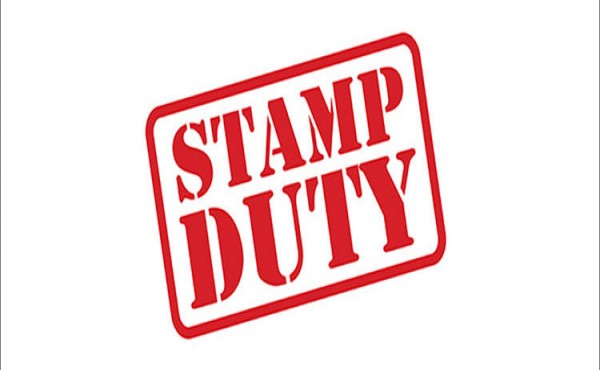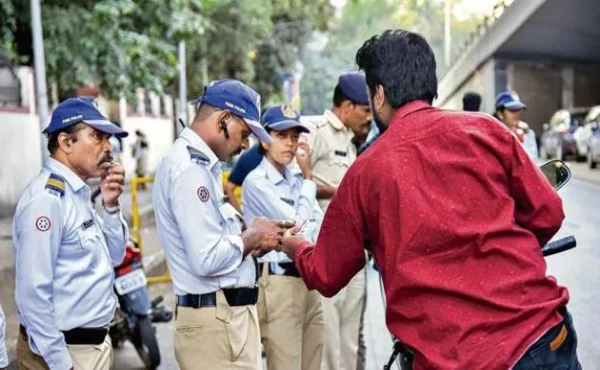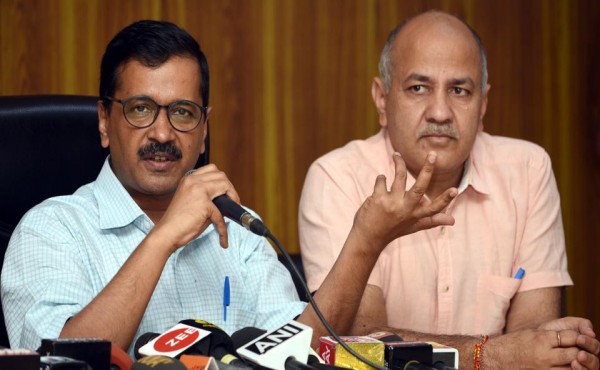SHEDDING LIGHT ON SECTION 353 OF INDIAN PENAL CODE (IPC)
Dated: March 13, 2022
~ by Suchita Rankhambe
Criminal force is defined under section 350 of IPC. Criminal force is simply when someone intentionally uses force on another person without their consent in order to commit an offence. Their goal is to cause harm through injury, fear, or annoyance. (Examples- intentionally yanking a woman's veil, pointing a gun (loaded or unloaded is irrelevant), intentionally pushing someone onto the street in front of speeding vehicles, intentionally lashing chariot's horses in which the victim is riding, intentionally hurling stones at victim and so on)
Section 351 of the IPC defines assault. A person charged with assault must have intentionally made a gesture or preparation to use criminal force. The threatened person must be present and apprehend potential criminal force for there to be an assault. (E.g., unleashing a vicious dog and intimidating the victim with it, lifting lathi or sword and proceeding towards the victim with it, shaking a fist with a threatening attitude and threatening to strike a blow, etc.)
The simplest way to understand the distinction between assault and criminal force is to use an example of someone throwing water on another person. Throwing water on a person is considered an assault. When water comes into contact with a person, it transforms into a criminal force. In criminal force, physical contact exists. In an assault, it does not exist. Criminal force is a more serious offence than assault.
Section 353 of Indian Penal Code,1860 states that assault or criminal force to deter public servant from discharge of his duty.—Whoever assaults or uses criminal force to any person being a public servant in the execution of his duty as such public servant, or with intent to prevent or deter that person from discharging his duty as such public servant, or in consequence of anything done or attempted to be done by such person to the lawful discharge of his duty as such public servant, shall be punished with imprisonment of either description for a term which may extend to two years, or with fine, or with both.
This offence is
- cognizable, which means that it is serious in nature and that arrest can be made without a warrant,
- non-bailable, which means that bail is not available to the accused,
- non-compoundable, which means that settlement between both parties is not permitted by the court,
- and triable by any magistrate.
"This offence, consists of assaulting or using criminal force on a person who is at the time of the offence a public servant in the execution of his duty. As such, he is often exposed to considerable risks in the discharge of his official duties, and the law, therefore, throws round him a special protection by prescribing especially deterrent sentences to those who offend against the majesty of the law of which he is a minister. As, however, it is not intended to encircle him with a perennial halo of sanctity and inviolability, the Code has throughout, in referring to him, protected him only when he is in the execution of duty, he being left at other times to have recourse to the ordinary law applicable to all alike." [1]
While this section empowers public servants, it is critical to demonstrate that public servants were performing their official duties at the time they were injured. If this condition is not met, this section will be inapplicable. In Mohammed Kutty v. State of Kerala, 2004, a forest guard was wearing his uniform as he walked from his home to his place of duty. The accused grabbed him and assaulted him. This would not constitute an offence under section 353 of the IPC because travelling to the place of duty is not considered to be in the discharge of official duties. [2] In a recent case, the complainant, a police inspector at the Bekal police station, Kerela, went to the High Court in his uniform in response to an investigation being conducted against him. The police officer was accused of taking an accused (who was a lawyer) in a case into custody and mistreating him at the Cherthala police station. On their way out of the High Court, the lawyers, including the petitioners, formed an unlawful assembly, rioted with weapons, insulted him, and assaulted him. The bench of Justice PV Kunhikrishnan held that “At no stretch of imagination, it can be said that the defacto complainant was in lawful discharge of his duty as a public servant, at the time of the alleged incident. Simply because he is in uniform, Section 353 IPC will not attract” [3]
AMENDMENT TO THE SECTION BY MAHARASHTRA GOVERNMENT
The need for harsher punishment was felt by the Government of Maharashtra, as the number of assaults on public servants, including doctors and police personnel, increased. The Maharashtra government introduced an amendment on April 10, 2019, to enhance the punishment for assaults on public officials, from two years to five years. Some argue that five years is too long, and that this amendment has given a lot of possibility for exploitation of this section.
In Pune, there has been an increase in the number of cases involving public assaults on government employees. In 2018, 161 assault cases were reported, up from 138 in 2017. In another case, a bus driver from Pune Mahanagar Parivahan Mahamandal Ltd (PMPML) was assaulted by an unidentified person who boarded the bus and began arguing with the driver. The Kondhwa police arrested four engineers in October 2018 on charges of abusing and threatening a female traffic constable. Chirag Rajendra Satav, 27, was sentenced to Yerawada Central Jail for verbally abusing a traffic cop at Mundhwa Chowk. Police Commissioner, K Venkatesham, has asked a third party to investigate the reason for the increase in the number of cases involving Section 353 of the Indian Penal Code relating to verbal abuse and threatening police officers. Speaking on the subject, Vijay Kumbhar, a Right to Information (RTI) activist, stated that while citizens should not take the law into their own hands at any cost, those involved in the justice delivery system should remember that the country belongs to the citizens. [4]
In one case, the accused used criminal force against a constable by grabbing his shirt while he was on duty, causing it to tear and a button to break. Judge AIS Cheema of Bombay High Court stated in the judgment that “If a Constable is interfering, it will be duty of every citizen to respect and citizens cannot be allowed to aggravate the situation by using criminal force against Police Constable who is discharging his duty to ensure that law and order is maintained. As such sentence of imprisonment has to be imposed. However, the same can be reduced to the period of three months as no earlier criminal record is shown.” [5]
PROCEDURE FOR THE TRIAL UNDER THE SECTION:
The procedure for the trial of an offence under Section 353, beginning with the filing of an FIR under Section 353, and ending with the court's judgment, has several stages. Once the accused is apprehended by the police, an FIR must be filed, and the accused must be brought before a Magistrate within 24 hours of his or her arrest. When the police have completed their investigation of a crime, they are required by Section 173 of the Criminal Procedure Code 1974 to file a final report (charge sheet) with the court. If a case is brought under Section 353 of the IPC, the final report will include all on-the-spot evidence gathered by the police, which will assist the court in determining whether the elements of the offence have been met or not. The court may reject the charge sheet and discharge the accused, or it may accept it and frame the charges in order to set the case for trial. A person arrested under Section 353 of IPC has the right, under Section 227 of the CrPC, to request discharge by demonstrating that the accusations levelled against him are false and/or extremely weak in order to continue the trial. After hearing both parties' arguments, the judge decides on the case and, based on the circumstances, issues a conviction or acquittal judgement. [6]
UNDERSTANDING THE DIFFERENCE BETWEEN SECTION 353 AND SECTION 186 WITH THE HELP OF A CASE LAW:
Panu Sahu and Naha Sahu, the decree-holders, sought execution of the decree in the Court of Munsif, Puri, against the appellants, and a writ of attachment of the movables of the judgment-debtor (Durga Charan Naik) was issued for execution through Sadhu Charan Mohanty, a peon of the Civil Court. Peon was about to seize some movable property with a warrant of attachment, and because the decretal sum of Rs 952.10 had not been paid, they obtained an attachment of the movable property in execution of that order. When the court peon arrived to seize some of the movable property, the accused resisted with lathis. Due to this, police assistance was requested, and an Assistant Sub-Inspector (ASI) and two constables were dispatched. They went to the location where the attachment writ was to be executed. The amount was paid to the process server (Sadhu Charan Mohanty) by Durga Charan Naik's father (Fakir Charan Naik), who was also one of the judgement debtors. They all left the village at 7 p.m. after receiving their payment. Durga Charan, along with 10-12 other people, boarded a boat and demanded that the money be handed over to him. When others intervened, the accused then left the scene.
The accused was found guilty under Section 353, IPC, but acquitted under Section 186, IPC, due to a lack of a written complaint under Section 195, Code of Criminal Procedure,1973 (CrPC). The charge under Section 353, IPC was based on the same facts as the charge under Section 186, IPC. Because no cognizance of crime under Section 186 may be obtained without first completing the procedure outlined in Section 195 of the CrPC, a conviction under Section 353, IPC based on the same facts would be an attempt to circumvent the restrictions outlined in Section 195, CrPC. The Supreme Court rejected this argument. It was decided that the offences under Sections 186 and 353 of the Indian Penal Code are distinct. In cases where the accused voluntarily obstructs a public servant in the discharge of his public functions, section 186 of the Indian Penal Code applies, but section 353 of the Indian Penal Code requires the addition of assault or use of criminal force while the public servant is performing his duty. Offences under section 353 are more serious in nature than those under Section 186. Section 186 applies when the accused wilfully obstructs a public servant in the performance of his official duties. Another distinction between these two sections is that Section 186 of the IPC punishes contempt of a lawful authority with a maximum penalty of three months in prison, or with a fine, or with both, whereas Section 353 of the IPC punishes with a maximum penalty of two years (five in Maharashtra) in prison, or with a fine, or with both. [7]
This section prevents citizens from taking the law into their own hands. It safeguards those in positions of authority. This concept is loosely based on the Latin phrase “Quis custodiet Ipsos custodes?” which means "Who will guard the guards themselves?" This section ensures the safety of those in positions of authority, which is just as important as the safety of those who do not hold positions of power.
References
|
[1] |
H. Gour, The Penal Law of India, vol. Volume 2, Law Publishers(India) Pvt. Ltd., 1953, p. 1568. |
|
[2] |
|
|
[3] |
|
|
[4] |
N. Inamdar, "Hindustan Times," 18 March 2019. [Online]. Available: https://www.hindustantimes.com/pune-news/case-and-conflict-section-353-in-focus/story-HoW7XmKdjofBWks77XkHPM.html. |
|
[5] |
|
|
[6] |
A. Tiwari, "iPleaders Blog," 15 February 2022. [Online]. Available: https://blog.ipleaders.in/section-353-ipc-assault-or-criminal-force-to-deter-public-servant-from-discharge-of-his-duty/. |
|
[7] |
Top Stories

Adultery no longer a Criminal offence says Supreme Court...
September 29, 2018
Stamp Duty on transfer of Shares and Debentures
September 14, 2018
SHEDDING LIGHT ON SECTION 353 OF INDIAN PENAL CODE (IPC)
March 13, 2022
DISMISSAL, DISCHARGE, TERMINATION AND RETRENCHMENT OF AN...
September 14, 2018
Are Adultery Laws Biased in India
August 13, 2018



